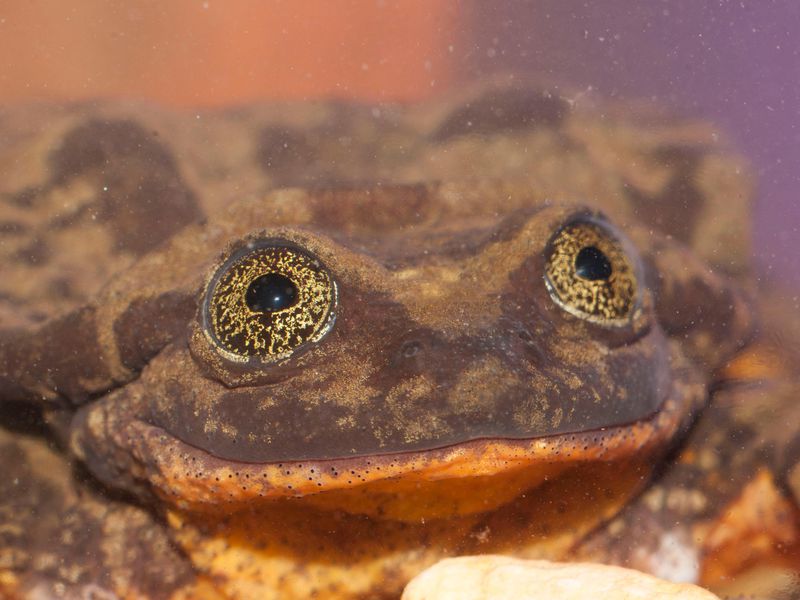
(Matias Careaga) [downloaded from https://www.smithsonianmag.com/smart-news/scientists-made-matchcom-profile-bolivias-loneliest-frog-180968140/]
It’s not for want of trying. Back in February 2018 worldwide interest was raised when scientists as the Cochabamba Natural History Museum (Bolivia) started a campaign to find a mate and raise funds for a search. ( I don’t know how I missed this story the first time. For long time readers, this is my frog story for this year.) From a February 14, 2018 article by Anoop Menon for India.com,
…
Scientists are scouring for a mate for Romeo, who has been calling forth for mates for the last nine years now. But alas, a mate hasn’t been found in the rivers and streams of the Sehuencas water frog’s natural habitat so far. So scientists have decided to make a Match.com profile for the lovelorn frog, according to the BBC [British Broadcasting Corporation]. The effort hopes to raise awareness of the condition of the Sehuencas water frog and raise money to fund searches for the Sehuencas water frog in areas where they once thrived.
Romeo’s dating profile reads, “I’m a pretty simple guy. I tend to keep to myself and have the best nights just chilling at home, maybe binge-watching the waters around me. I do love food, though, and will throw a pair of pants on and get out of the house if there’s a worm or snail to be eaten!” His preference is for females between two to three inches tall and is okay with drinkers but not smokers. But honestly, at this point, he should be fine with just about anything.
All jokes aside, Romeo’s plight is an important one. The profile links to the campaign donation page that it is part of, with an aim of raising USD 15,000 to search for more Sehuencas water frogs. And Match.com is doing its part by matching all donations made from February 9 to today, Valentine’s Day.
…
Zoe Schlanger’s February 10, 2018 article for Quartz, in the context of Romeo’s (and the scientists’) quest, offers information about the ‘current state of amphibia’, Note: Links have been removed)
…
As the Earth faces what some experts call its “sixth mass extinction,” amphibians, like frogs, are among the most imperiled. Around half of amphibian species (which includes toads, salamanders, frogs, and newts) are reported to be in decline. A third are considered to be threatened with extinction.
Last year, 10,000 critically endangered “scrotum frogs” that lived in Lake Titicaca on the border between Bolivia and Peru died en masse. In the US, federal scientists say the overall amphibian population is shrinking in size by 3.8% every year. That trend has continued since the 1960s, due to a mix of climate change, pesticide applications, and diseases like infectious fungi which can quickly decimate populations.
Frogs seem to be especially vulnerable. Roughly 74% of frog species globally are in decline, and 80% of the frog species that live in India are threatened, a researcher recently told the Hindustan Times.
Hande ‘s February 12, 2018 article for CNN adds a few more details about Romeo and about the effort to save him,
Arturo Munoz [Arturo Muñoz Saravia] , founder of the Bolivian Amphibian Initiative and GWC [Global Wildlife Conservaation] associate conservation scientist, said, “When biologists collected Romeo 10 years ago, we knew the Sehuencas water frog, like other amphibians in Bolivia, was in trouble, but we had no idea we wouldn’t be able to find a single other individual in all this time.”
Romeo started to call for a mate about a year after he was brought into captivity and Munoz pointed out that those calls have slowed in the last few years.
“We don’t want him to lose hope, and we continue to remain hopeful that others are out there, so we can establish a conservation breeding program to save this species,” Munoz said.
Update
They raised almost $25,000 in funds to search for a female but there’s been no luck yet. Sehuencas water frogs live for about 15 years and Romeo has lived in the Cochabamba Natural History Museum for the last nine or 10 years. You do the arithmetic.
Apparently, Sehuencas water frogs were once found in both Ecuador and Bolivia. Today, there are only two regions of Bolivia (Cochabamba and Santa Cruz) where they are reputed to live. (There is more about the current search for a mate in a July 26, 2018 news item on phys.org.)The Sehuencas water frog Wikipedia entry has this to say (Note: Links have been removed),
While it is currently listed as vulnerable by the IUCN [International Union for Conservation of Nature], this is based on an assessment that has not been updated since 2004.[1] No individuals have been encountered in the wild since 2008.
You can find out more about Muñoz’s Bolivian Amphibian Initiative here. There don’t seem to be any Romeo updates on the website but they still seem to be gathering donations. Romeo’s dating profile is here.
Plea
One possibility occurred to me (and I imagine others), if there’s someone out there who has a female Sehuencas water frog in their aquarium at home, please consider saving the species. I’m certain a deal can be made.
Finally,. Good luck, Romeo!